The following information includes segments from the publication “Pauleen a young woman’s wartime experience at an Officer Candidate School” The author is Noel W Wallis and it was published by the Richlands, Inala and Suburbs Group Inc. A copy of the publication was donated by the History Group to the Camp Columbia Heritage Association.
During World War II, the American Officer Candidate School (OCS) was established in Brisbane, providing comprehensive training for American soldiers aspiring to become officers. The school, located at Camp Columbia in Wacol, Queensland, operated from 1942 to 1945.
Preparations to establish the School
The concept of an Officer Candidate School somewhere in South-East Queensland during World War II was activated by the United States War Department at the end of 1942. Orders were issued by the Adjutant Generals Office in Washington DC that thirty-seven officers be initially assigned to the school as staff and faculty. Colonel Harold Haney (Infantry) was assigned as Commandant, and his staff comprised of Colonel Frank Dewey (Cavalry) Executive Officer and Lieutenant Colonel George Privett as Director of Training.
The purpose for an O.C.S. was to train qualified personnel in the Pacific Theatre of the war for the commissioned ranks of the United States Army. Candidates for the school, through written application and appearance before an examining board, would be sent to the school and enrolled in one of the eleven branches for a training course which would vary in length from a first special six weeks course through a three-month course, and finally a four-months course.
The original staff and faculty assembled at Fort Mason, California, on 20th October, and the advance party, consisting of Colonel Haney, Colonel Dewey, Lieutenant Colonel Privett and Lieutenant George Tapper, departed for Australia by plane – leaving the remaining officers to follow by ship.
The advance party arrived in Brisbane on 24th October and proceeded by plane to Sydney where they were assigned to Headquarters USASOS (Service of Supply). The Brisbane area was selected for the location of the school, and the advance party returned to the Queensland capital to prepare. Three sites were considered – Camp Columbia, Camp Cable and the Southport Boys School. Of these, Camp Columbia, then operated by Headquarters 5th Camp Company, was chosen as most suitable because of the immediate availability, present and potential capacity and convenience to related installations.
Arrival of the first students
In accordance with the wishes of Headquarters USASOS, plans were made to conduct a six-weeks special course for Service of Supply candidates without delay. Candidates were required to be qualified in technical knowledge for commission so that the special course covered only basic officer training, leadership and discipline.
Inasmuch as the main body had not yet arrived in Australia, instructors for the special school were assigned by USASOS from the 5th Replacement Centre in Sydney.
The special course began on 18th November with 135 candidates enrolled in services such as: Quartermaster, Signal Corps, Engineers, Transportation Corps, Chemical Warfare Service, Ordnance, Army Administration, and Air Corps Administration.
The School maintained a rigorous schedule and upheld high standards of instruction. It was run by the U.S. Army Signal Corps and integrated with the Signal Corps OCS program at Ft. Monmouth, Georgia. The school offered a three-month course covering various subjects such as military law, tactics, administration, communications, engineering, and leadership. The training companies, including the 1st, 2nd, 3rd, and 4th, were divided into four platoons, with each company consisting of approximately 200 candidates.
During the six weeks course, training facilities and training areas were inadequate due to the lack of sufficient time allowed the advance party for organisation. Officers and students were housed and all classroom work held in outside areas. The site on the southern side of Ipswich Road was still mainly bushland, but by mid-1943 it was the main camp area.
On 1 December 1942, the main body of the O.C.S. staff and faculty arrived in Brisbane. Preparations were begun immediately for the first regular class to begin in January the following year. Property around Redbank Plains was procured in February as a second training area.
At the end of the month, 113 candidates of the original 135 enrolled in the special course were commissioned. Graduation exercises were held in the field adjacent to the home of the Commandant of Camp Columbia. The graduation address was delivered by Major General Richard J. Marshall, the Commanding General of USASOS. Upon graduation, Officer Candidate School candidates were commissioned as second lieutenants and subsequently assigned to various units within the South West Pacific Area. The graduates played crucial roles in the war effort, with some serving in New Guinea and other locations in the region.
The first regular class for 1943 was held from 4th January to 1st April with a complement of 477 candidates. The regular staff and faculty were now operating the school whilst the officers from the 5th Replacement Centre had returned to Sydney.
Additional training areas were secured to include Redbank Rifle Range, the hilly country behind the range, and the North Burleigh Anti-aircraft Range. Training with anti-aircraft artillery was now added to the course curriculum, and in March, a Medical Detachment was activated within the O.C.S.
Of the total number of candidates in the first three-month course 386 graduated and received commissions. The graduation ceremony included a parade and the decoration of several students followed by an address by Lieutenant General Walter Krueger, the Commanding General of the United States Sixth Army which then had its Headquarters in the western sector of Camp Columbia. These ceremonies were held at the Camp Columbia theatre. A few of the newly commissioned officers were retained at the O.C.S. to increase the staff – a policy which was followed at the end of each class thereafter.
In the next three-month class, Transportation Corps and Army Administration were added to the existing branches of the school. On April 5th the school opened with a total enrolment of 495 students.
By the end of its life the School occupied an area of 265 acres plus approx another 32,0o00 acres for range and manoeuvre area. In all close to 6000 candidates went through the School, the graduation rate was just above 63%. This included 152 Black Americans, of which 68 graduated.
Joys and woes
The O.C.S. had its first casualty on 11th June 1943, when a cow was killed on the Redbank Plains Artillery Range during a demonstration firing of a number of 105 mm Howitzers. At the Renovation Small Arms factory -consisting of two very large buildings – situated where the suburb of Ellen Grove is today, 75 mm., 105 mm. and .50 shells were prepared for field use. The concrete bases of these buildings remain in 2006.
Another more serious accident occurred in mid-1944 when an Infantry Instructor had his left hand blown off when an offensive grenade exploded accidentally during a Scouting and Patrolling demonstration. Apart from this incident, the accident rate was low at the O.C.S.
A notable visitor to the O.C.S. in mid-1943 at the class graduation was Lieutenant General Robert Eichelberger who addressed the assembled troops. The participation of such distinguished United States officers at the O.C.S. shows the importance the Army placed upon the facility.
A great sadness came to the staff and students in November when news arrived that one of the founding officers of O.C.S., Colonel Frank Dewey, had died in an air crash in New Guinea. At about the same time, Colonel Privett assumed command upon the departure of Colonel Haney. Lieutenant Colonel Dunn became Director of Training.
Camp Columbia and Community Interactions
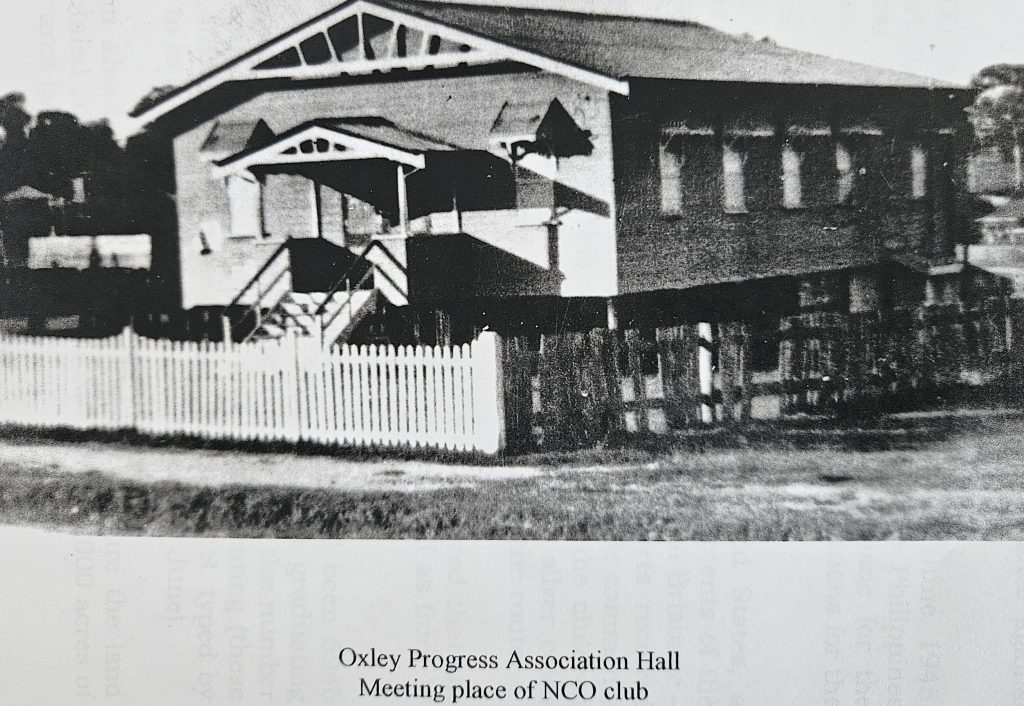
It was not all work for the candidates and officers of the O.C.S. Night movies were provided at the Camp Columbia theatre for those who wished to attend. In addition, athletic equipment was provided for the troops and school athletic teams were organised. Also, there was an NCOs club for American troops at the Oxley Progress Hall in Station Road, Oxley (now Oxley Station Road), and trucks brought men down from the camp and returned them at midnight every night. The O.C.S. officers had a club on site at the camp.
Local businesses and farms were also often frequented by the soldiers. Many candidates were invited into the homes of the local people and many friendships eventuated from here. One of the candidates – Richard Grantham (President of the NCO Club) -married, after the war, the daughter of the butcher – Lona Price – her family had the shop opposite the hall.
The School, was also in proximity to the 6th Army Headquarters and the 28th Surgical Unit, where American nurses were stationed. The officers and candidates often engaged in social activities with the nurses, attending dances and going on dates. These interactions fostered camaraderie and provided an opportunity for soldiers to unwind amidst their rigorous training.
School continued during the Dutch period.
The American moved their staging camp from Brisbane to Hollandia in Dutch New Guinea in 1944. The Dutch took over the Camp for their efforts to liberate and recolonise the Netherlands East Indies. However, the school continued to operate. It is unclear if the Dutch also used the school. One of their key activities was intelligence services and it could well be that there was at least some sort of collaboration or exchange of communication.
Following the conclusion of World War II, the Officer Candidate School at Camp Columbia was disbanded 0n 15 June 1945, at the end of the course that has started in 5 February that year.
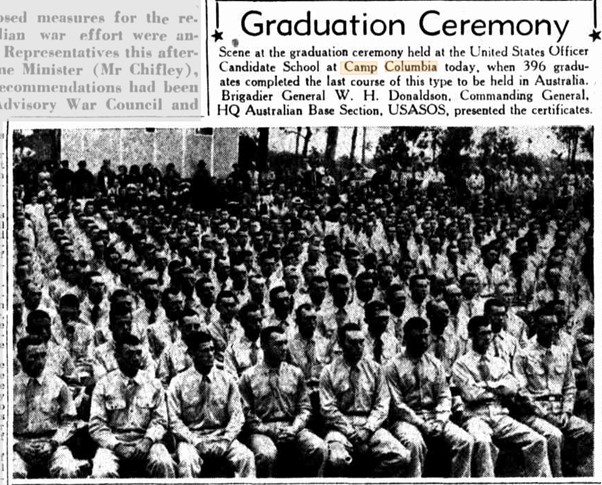
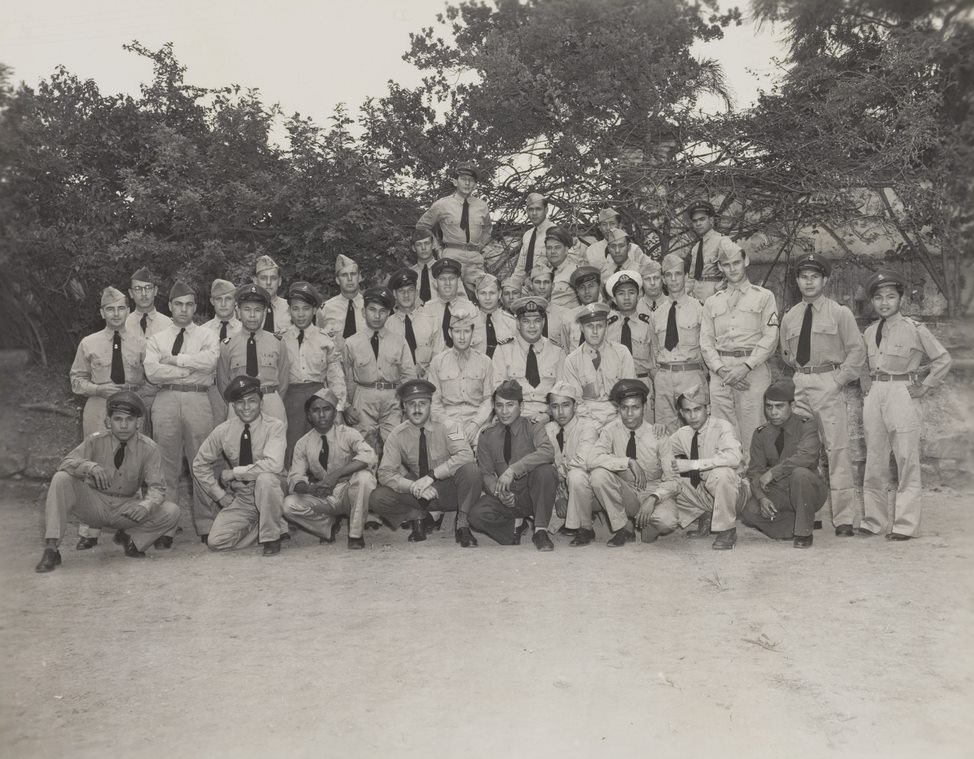
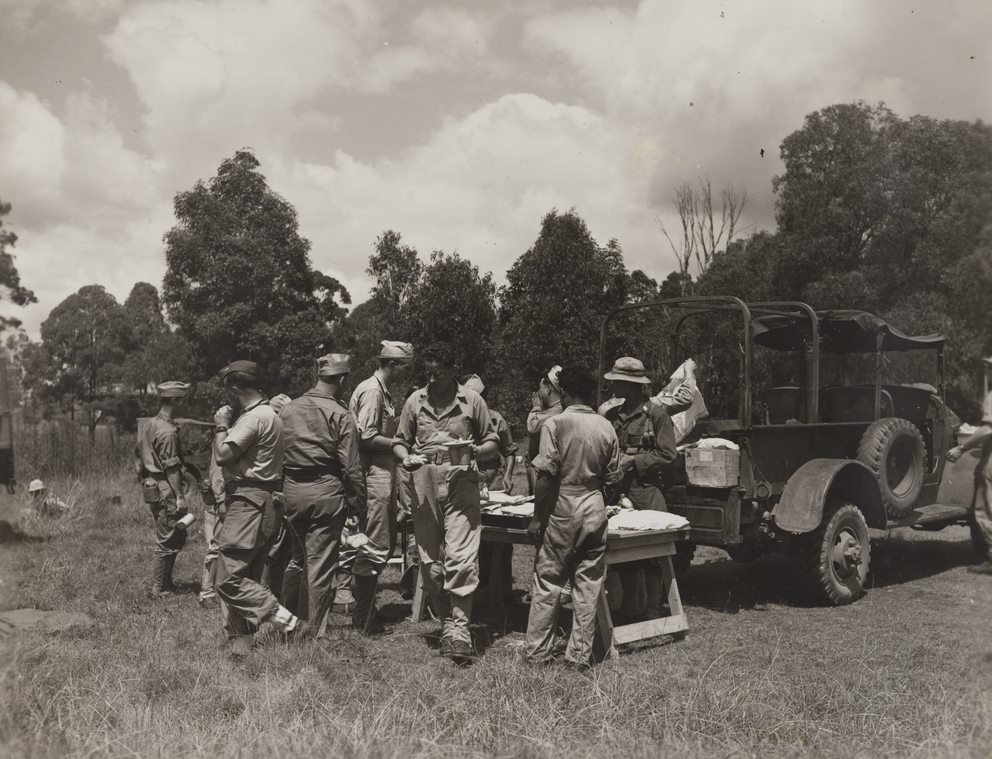
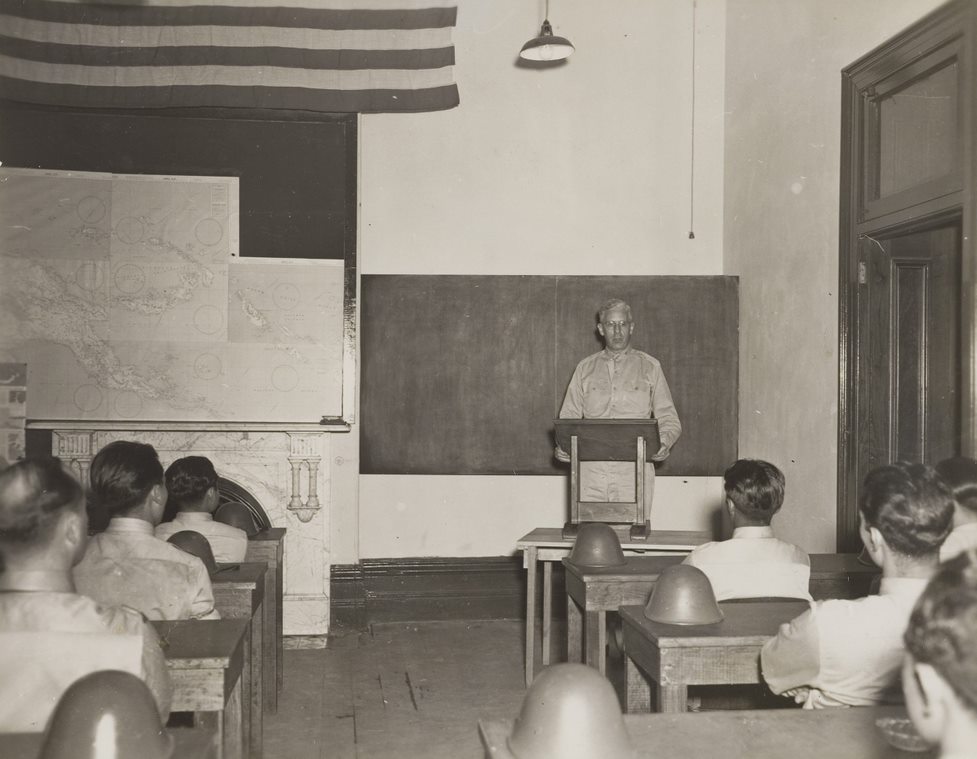
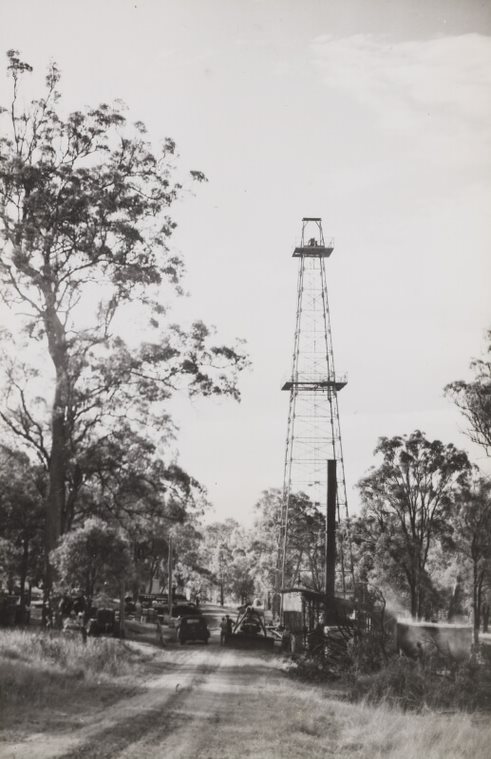
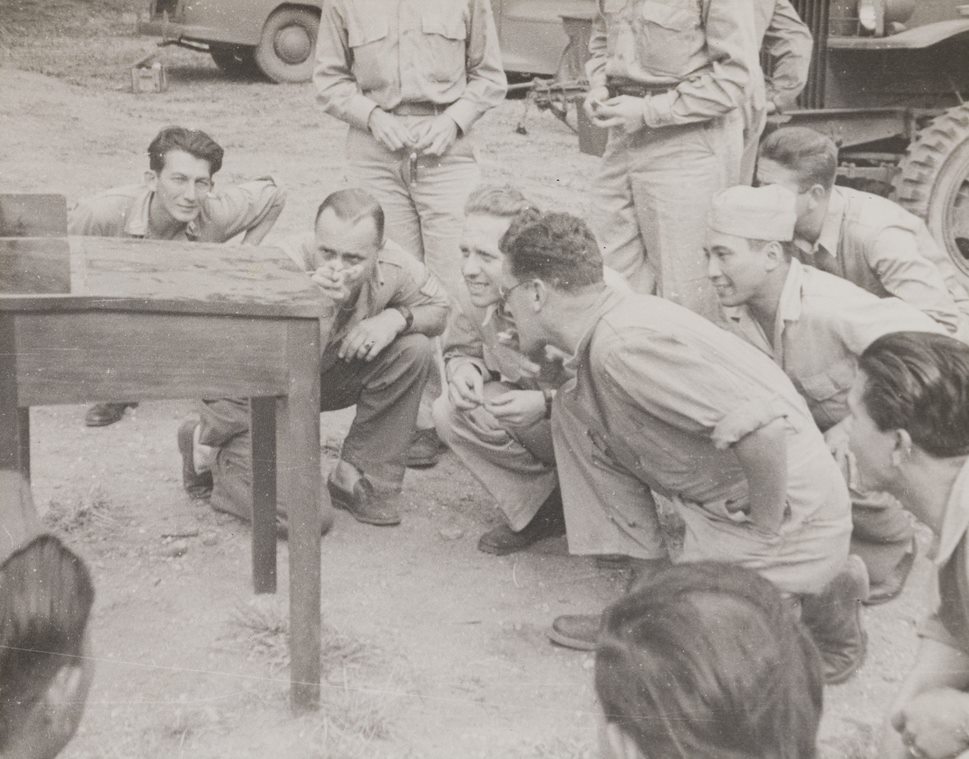
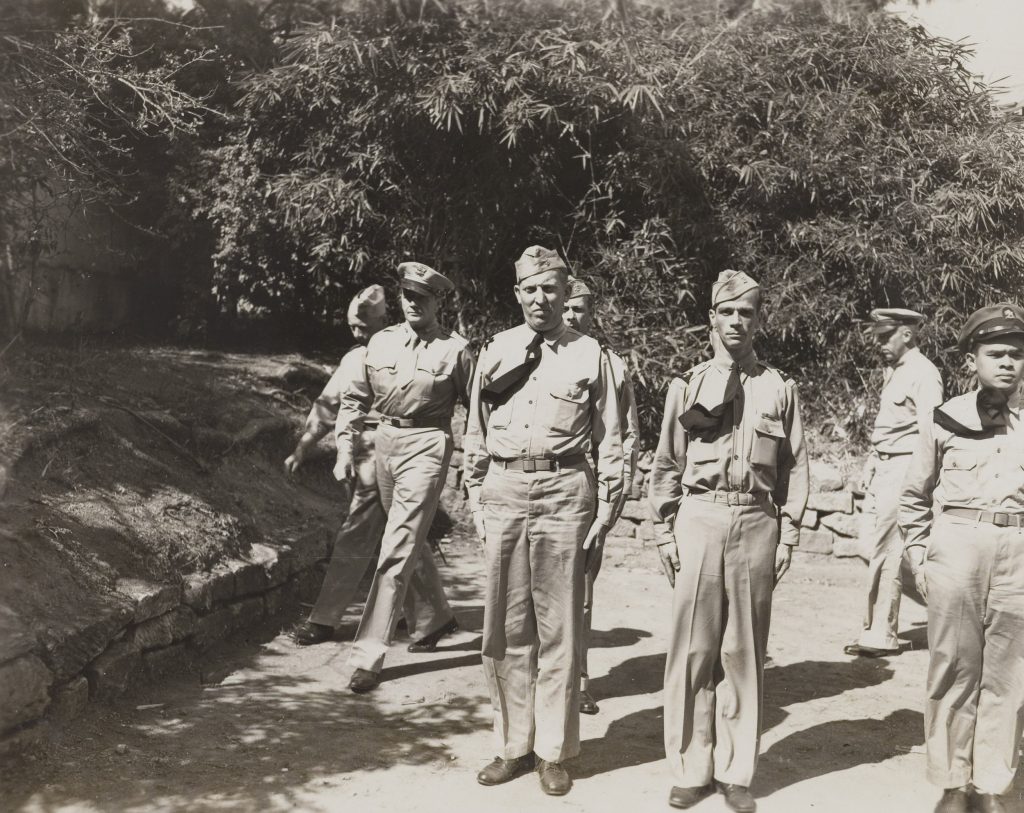
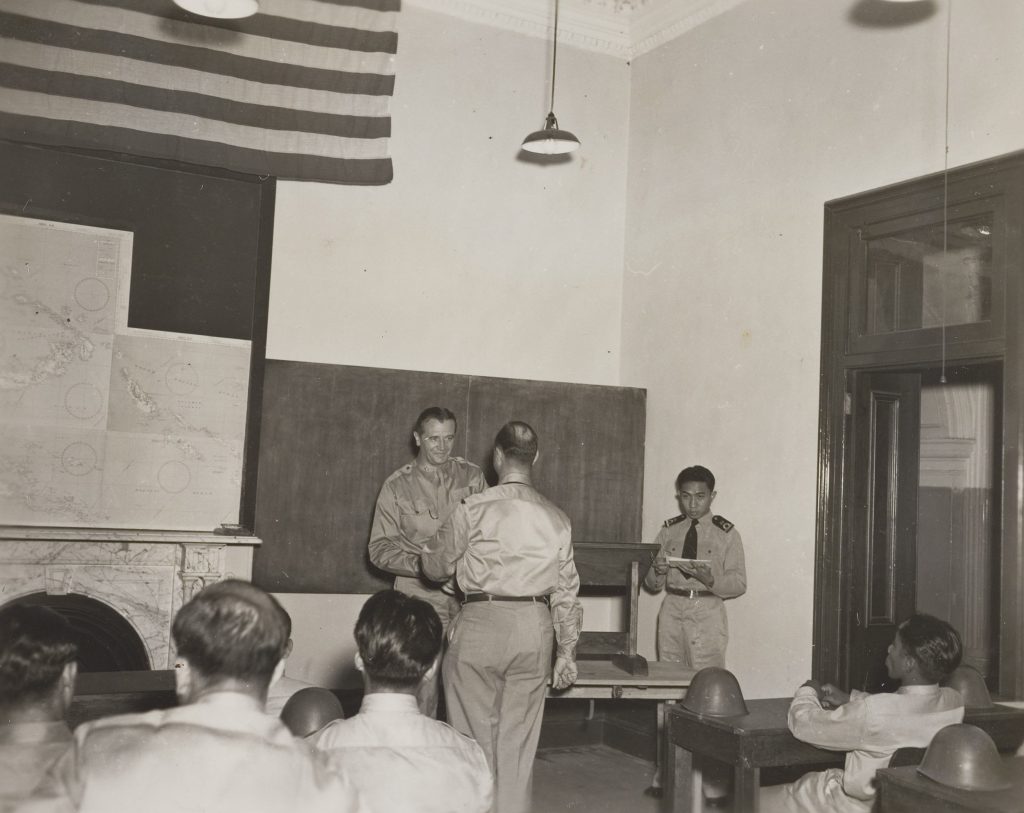
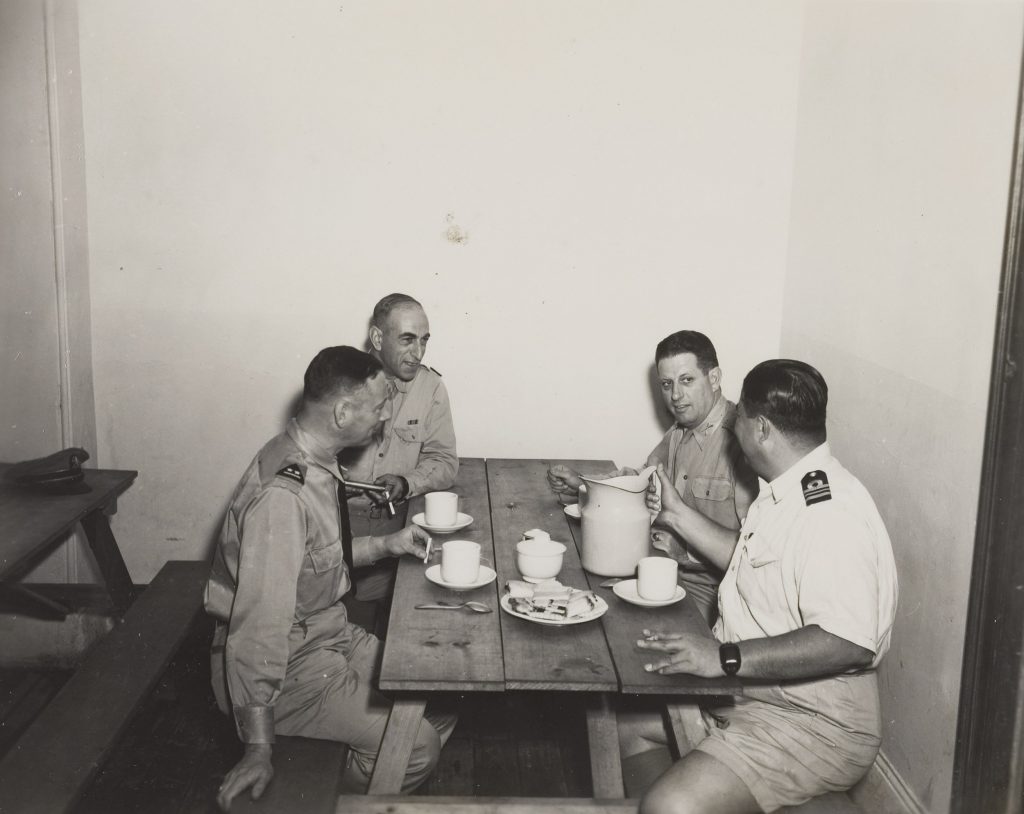
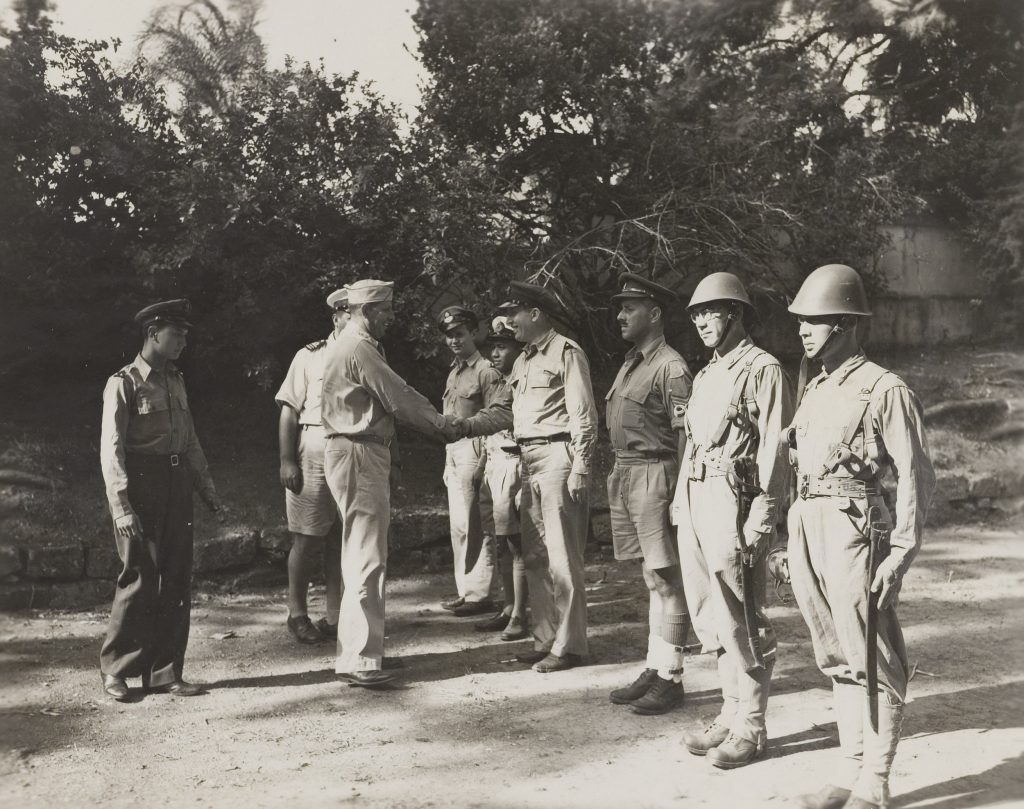
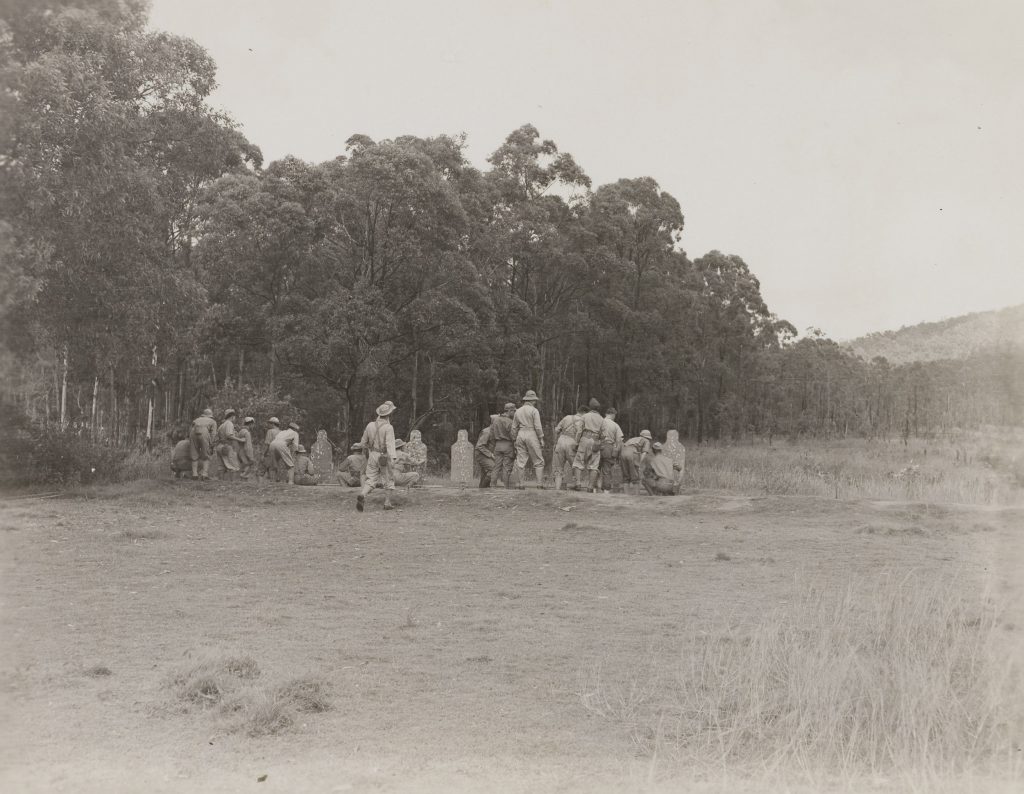
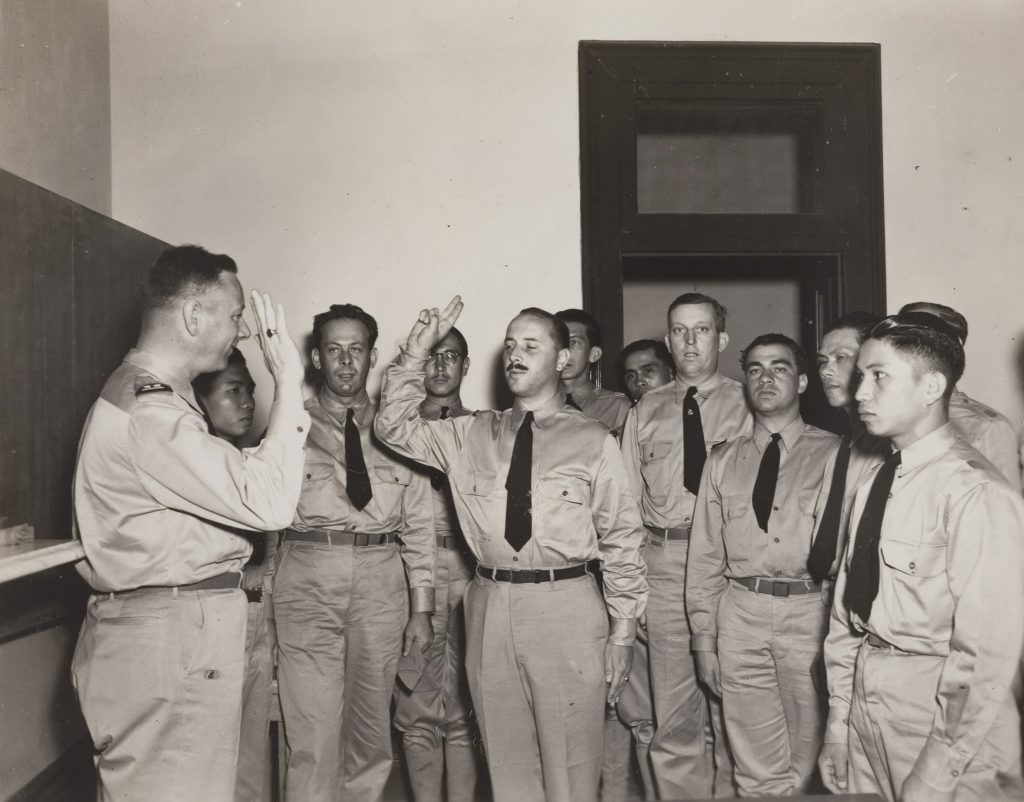
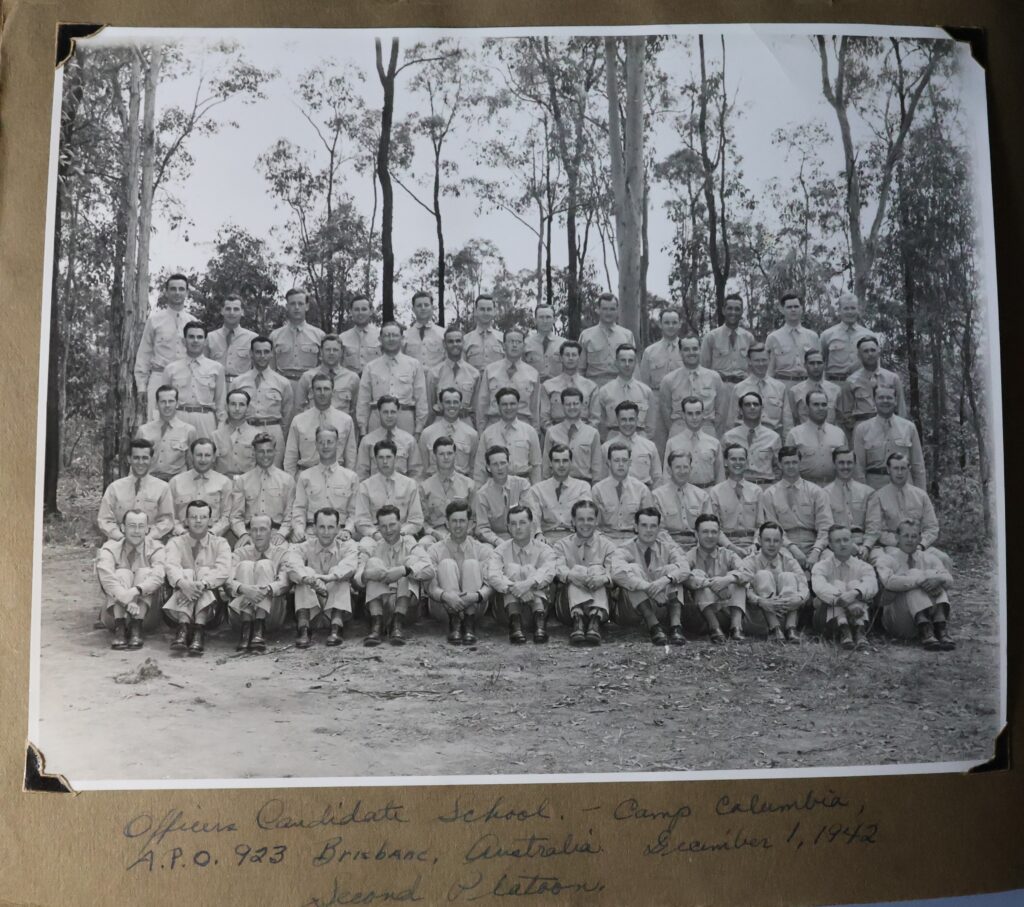
The following pictures are four pages from the publication: “Pauleen a young woman’s wartime experience at an Officer Candidate School”
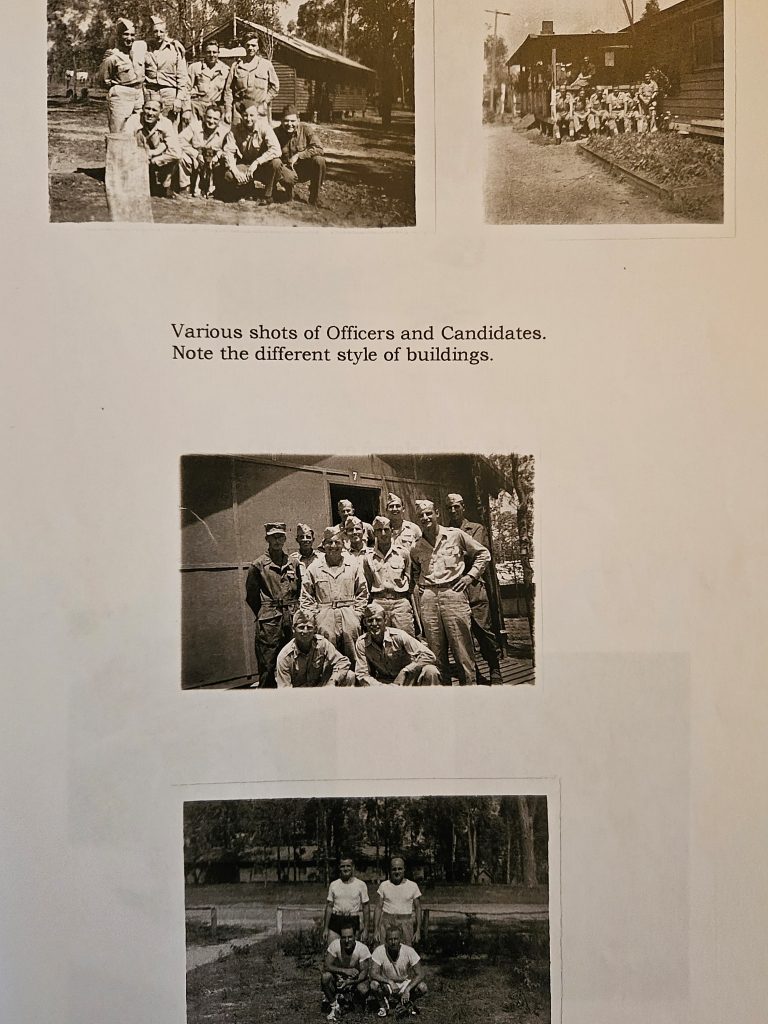
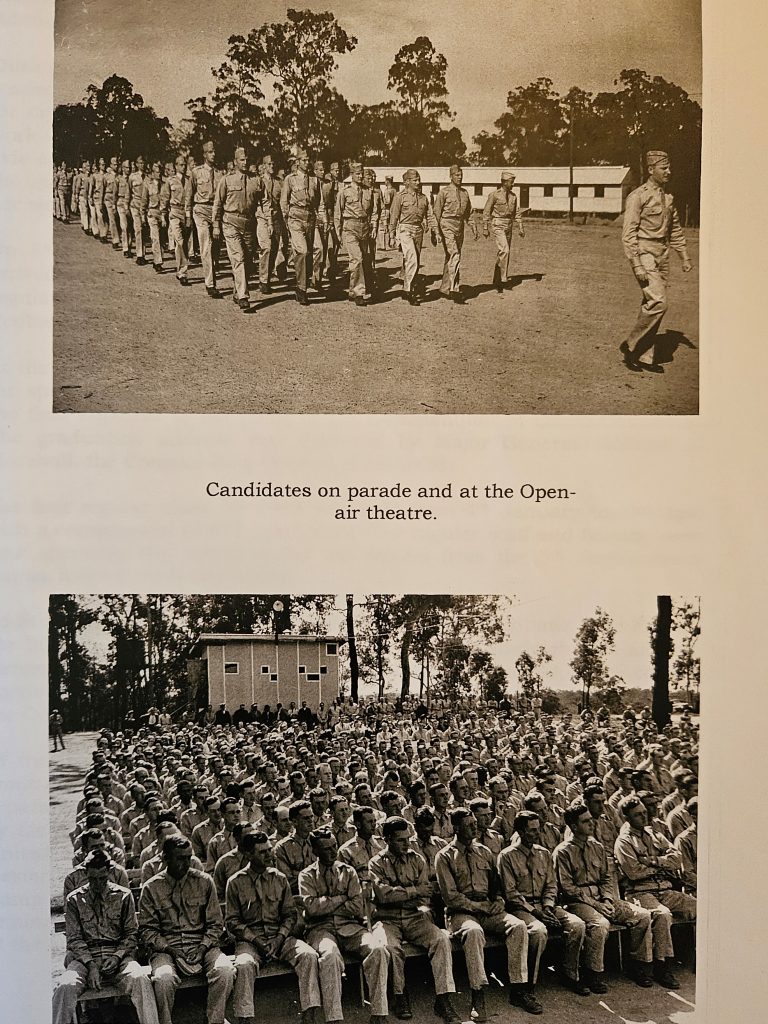
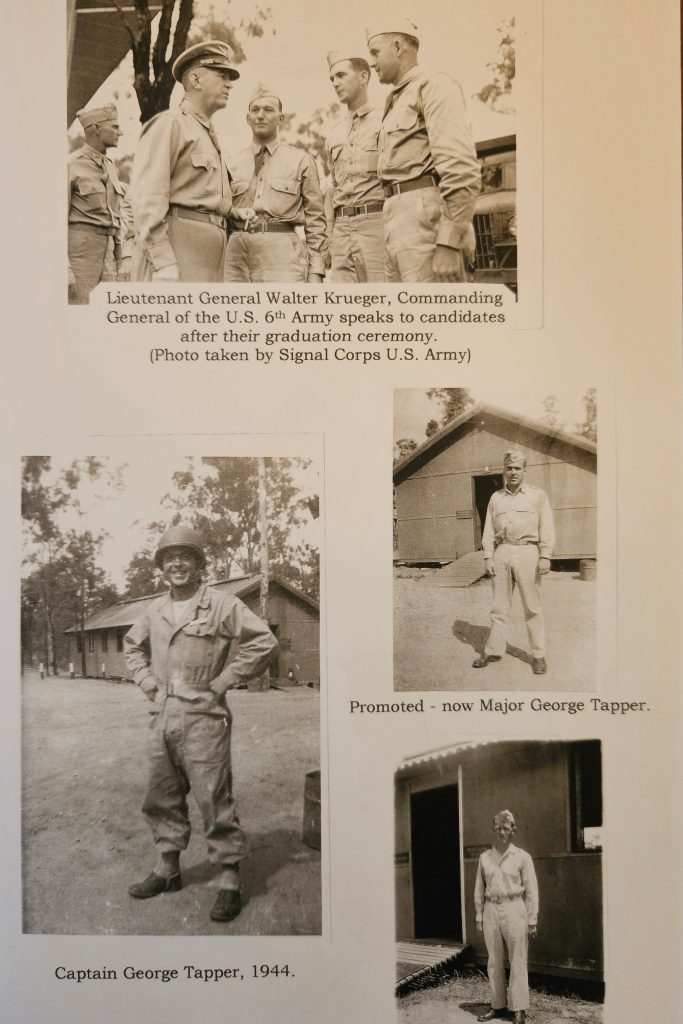
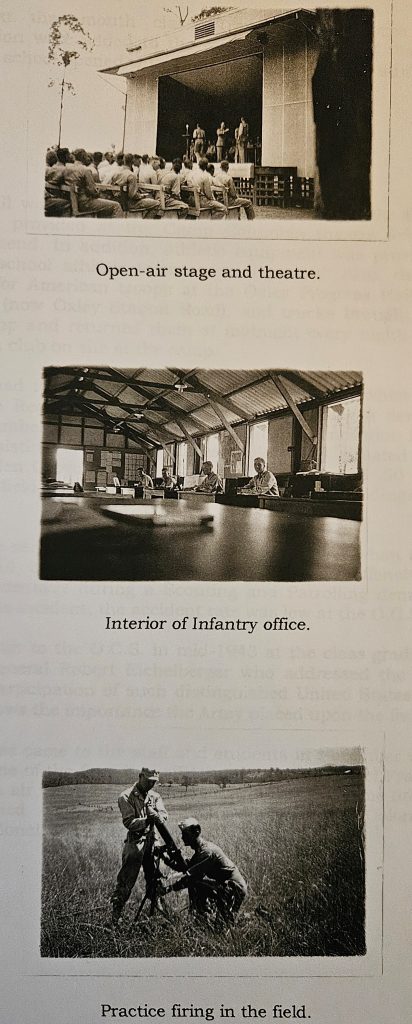
The drawings below are from the same book but unknown if the artist was Pauleen or somebody else.
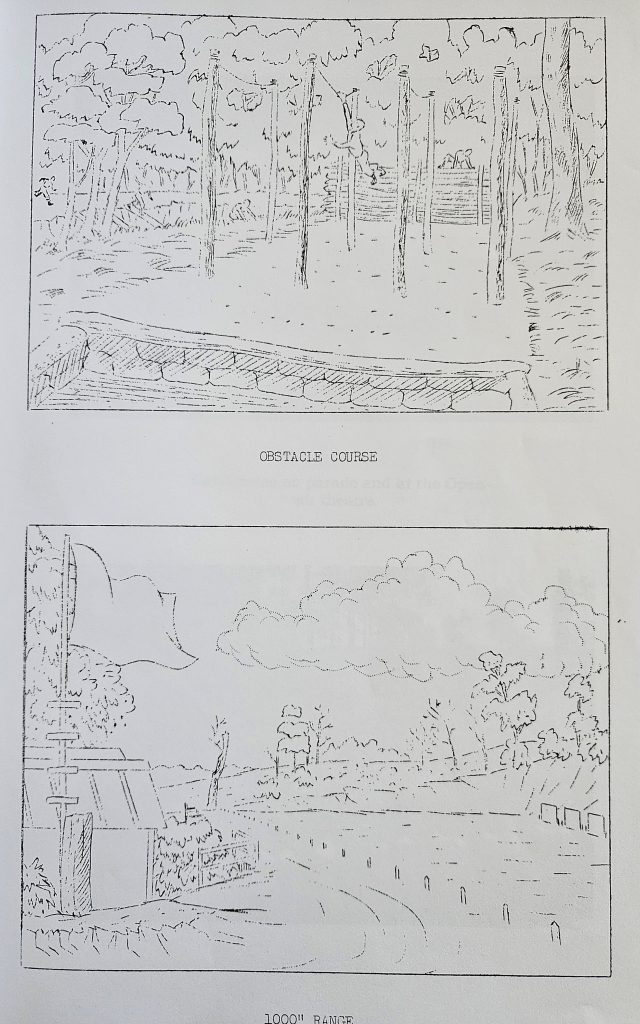
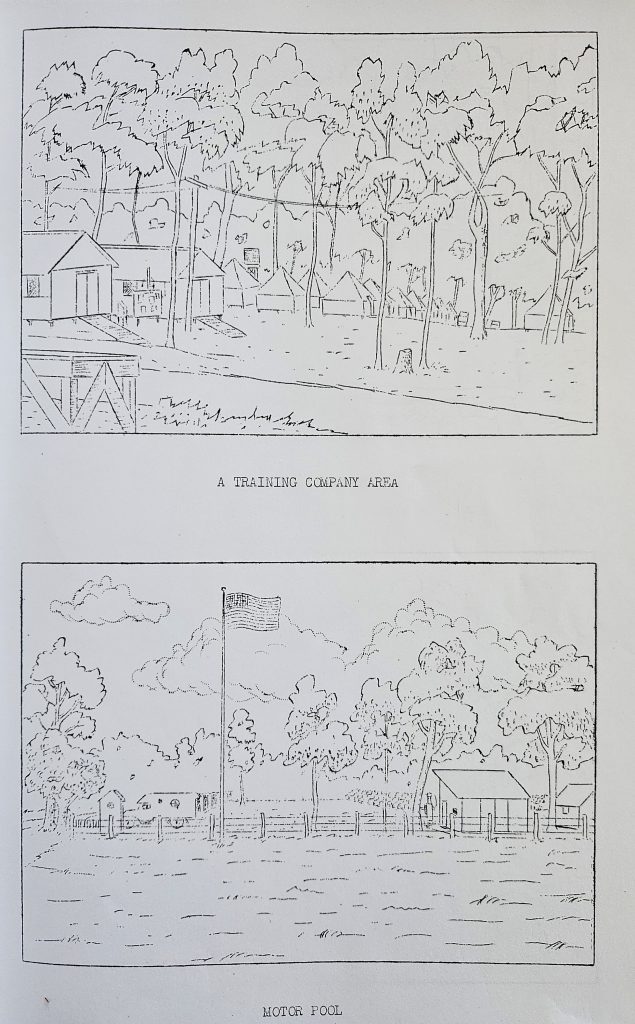
The map below is from the US Army Force (USAF).

See also:
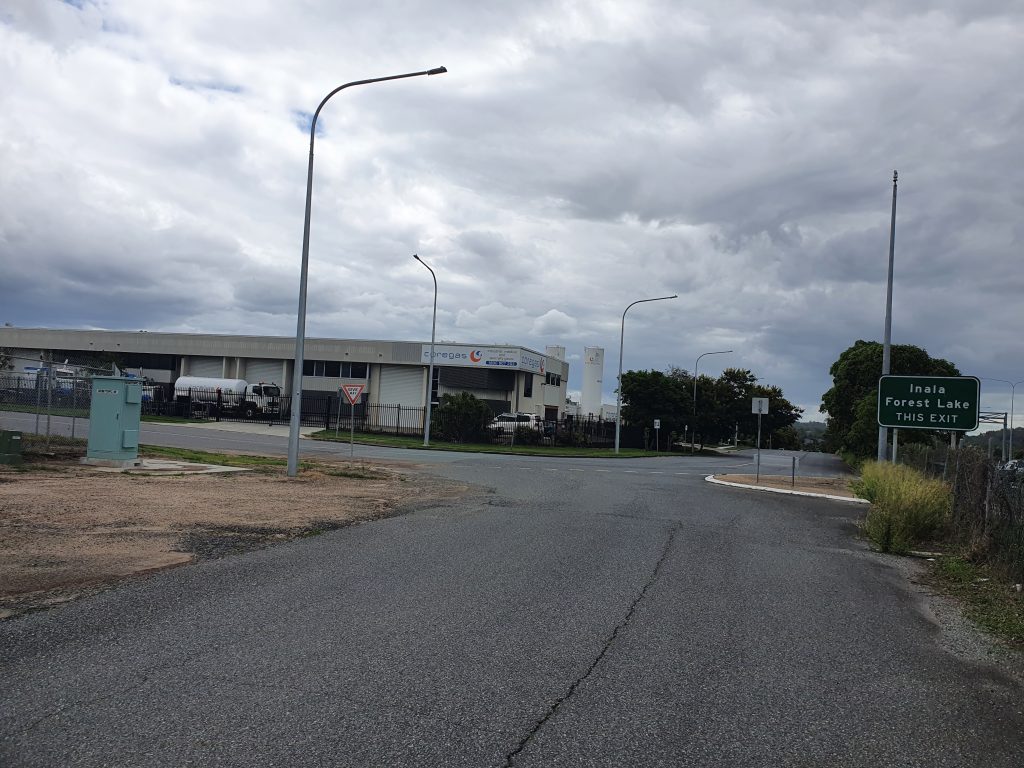
Pauleen Badke – a young woman’s wartime experience at Camp Columbia’s Officer Candidate School
